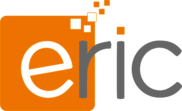À la fois par son appartenance à des structures essentiellement liées aux lettres, langues, sciences humaines et sociales (Université Lyon 2, Maison des Sciences de l’Homme Lyon-Saint-Étienne, Institut du Genre) and multidisciplinary research (LabEx Intelligence des Mondes Urbains, Institut rhônalpin des systèmes complexes), by strongly participating in the Master Humanités Numériques (dont la coordination de la mention) coaccrédité par les universités Lyon 2 and Lyon 3, l’École Normale Supérieure de Lyon et l’École nationale supérieure des sciences de l’information et des bibliothèques, et par sa participation à de nombreux projets interdisciplinaires avec divers laboratoires de LLSHS, ERIC est devenu un acteur reconnu des humanités numériques sur le site de Lyon-Saint-Étienne et nationalement.
L’axe transversal HN permet de structurer et de rendre visibles les travaux communs menés par les équipes DMD and DIS du laboratoire en matière d’humanités numériques. Scientifiquement, notre objectif n’est pas seulement de trouver des terrains d’application à nos recherches, mais surtout d’hybrider les méthodologies informatiques et statistiques à celles des LLSHS pour aboutir à des approches originales. Nous nous inscrivons également dans des collaborations sur le temps long, nécessaire à un travail interdisciplinaire qui porte réellement des fruits.
Thématiques scientifiques
- Lacs de données. La tendance actuelle implique toute la variété des mégadonnées (structurées, semi-structurées et non structurées, dont les documents textuels très prégnants en LLSHS), qu’il faut gérer et interroger de concert. C’est une thématique notamment prise en compte dans nos travaux sur les lacs de données et qui structure notre réflexion. De plus, l’accessibilité de ces types d’organisation, de requêtage et d’analyse des données à des non spécialistes de l’informatique ou de la science des données, tels que nos partenaires chercheur·es en LLSHS, pose des problèmes de fond.
- Explicabilité de l’intelligence artificielle. À partir du moment où l’on donne l’opportunité à des utilisateur/trices non informaticien·nes d’utiliser, voire d’interagir, avec le résultat de modèles et d’algorithmes d’apprentissage automatique, il ne s’agit plus uniquement de fournir le résultat d’un algorithme de clustering, for instance, is not enough. A concise description of the produced clusters produits et, si possible, de revenir aux données d’origine afin que l’utilisateur/trice comprenne pour quelles raisons des objets (par exemple, des textes) ont été placés dans une même catégorie.
Quelques projets récents
- Research partnership with the Digital Humanities de l’Université d’Ottawa
- ANR LIFRANUM (Littératures francophones numériques). Ce projet vise à l’identification, l’indexation et l’analyse des productions littéraires nativement numériques dans l’aire francophone. Collaboration avec le MARGE laboratory and the Bibliothèque Nationale de France.
- PAI « Intelligence artificielle et analyse d’un lac de données numériques de formats et contenus fortement hétérogènes pour l’archéologie ». Ce projet interdisciplinaire international financé par la Région AURA vise à extraire des informations qualitatives (sémantiques) à l’aide de l’intelligence artificielle afin de constituer un stock de métadonnées nécessaire à l’analyse de documents numériques stockés dans un lac de données. Collaboration avec l’Université Autonome de Barcelone, laboratories Archéorient and Archéologie et Archéométrie, as well as the site-musée d’Ullastret and Bibracte EPCC.
- IMU HyperThésau (Hyper thésaurus et lacs de données : fouiller la ville et ses archives archéologiques). Ce projet vise à constituer une plateforme pour la pratique archéologique, par l’élargissement des référentiels de la communauté scientifique, la conception et le prototypage de modes opératoires d’indexation/archivage pérennes de données moissonnables et par l’inclusion d’amateurs qualifiés dans les opérations d’enrichissement de données partagées. Collaboration avec les laboratoires Archéorient, ArAr, CESCO Paris, la société Archeodunum, l’UMS PERSEE, Bibracte EPPC, l’Université Autonome de Barcelone et les Musées d’archéologie de Catalogne.
- PIA TIGA (L’industrie intégrée et (re)connectée à son territoire et à ses habitants). Ce projet interdisciplinaire porté par la Métropole de Lyon, in partnership with the LabEx Intelligence des Mondes Urbains.
